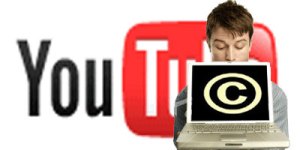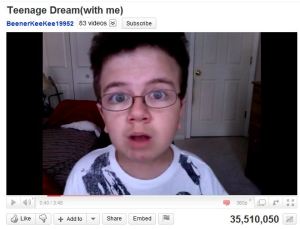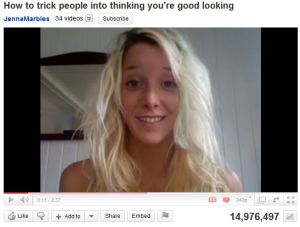Money.
Pink Floyd says it’s a gas. Liza claims it makes the world go ’round. And according to Michael Jackson, people lie for it, spy for it, kill for it, die for it. Needless to say, money is a pretty important part of our lives. So can you imagine making six-figures worth of it by uploading videos to YouTube? According to this New York Times article, this seemingly impossible feat is actually a reality for some YouTube stars who have turned hobby into full-time internet career.
YouTube – which has over 100 million views per day – opened the door for much larger audiences for some independent content creators. Over time, these YouTubers are quitting their day jobs in exchange for YouTube sponsorship and advertising revenue.
But exactly how does it all work? One of the biggest road blocks in verifying YouTube salaries is that YouTube users, upon getting accepted into the Partnership Program, are required to sign a confidentiality agreement that prohibits them from divulging any financial information.
However, an article from Yahoo Finance recently reported annual earnings of some YouTube partners – and several prominent figures on YouTube claim the numbers are accurate. The article details ten YouTube stars who earned over $100,000 the previous year from the website. These people are not associated with major companies or brands, and instead built their following from the ground up.
So let’s break it down. Advertising revenue is based on the number of views a video gets. Revenue is generated by CPM (Cost-per-mille, or cost per 1,000 views), and according to reports, the average CPM ranges from somewhere between $0.75 to $2.00.
For example, take this video from Ray William Johnson, the second-most subscribed YouTube channel of all time, which has received 3,638,347 views to date.
If we go by those reported numbers, the revenue would factor out like so:
3,638,347 views /1,000 views (CPM) = 3,638.35
3,638.35 x 0.75 = $2,728.76 (lowest range)
3,683.35 x 2.0 = $7,366.70 (highest range)
So this particular video could generate anything from $2,700 to $7,300 in advertising revenue. Those earnings are then divided between YouTube and the partner. So for Ray, this video could earn him anywhere from $1,300 to $3,600. As of today, Ray has uploaded just over 180 videos. If his viewership is consistent, he could have earned up to $650,000 from his YouTube channel alone!
$3,600 x 180 videos = $648,000
Of course, this is the exception and not the rule, as it has been reported that only 3% of YouTube’s content is from its Partners. Obviously these numbers are appealing, and would be great motivation for anyone to want to become a YouTube partner, but it definitely takes time and persistence.
Other reported YouTube partner annual earnings include:
- Shane Dawson – $315,000 (annual views = 431,787,450)
- The Annoying Orange – $288,000 (annual views = 349,753,047)
- Philip DeFranco – $181,000 (annual views = 248,735,032)
- Ryan Higa – $151,000 (annual views = 206,979,909)
- Fred Figglehorn – $146,000 (annual views = 200,656,150)
- Smosh – $113,000 (annual views = 154,936,876)
When it comes to content, the Partnership Program is pretty much a win-win for YouTube and its partners. When provided with a steady source of income, partners are motivated to hone their video-making skills and produce higher-quality content for the site. YouTube, in turn, gets better content and greater views.
In the end, is it worth it? For someone to think they could be making that kind of money right off the bat would be insane. Some of the partners have been on YouTube for years, but only became partners and started earning money this past year. It takes a lot of time, energy, and imagination to keep viewers watching and subscriptions intact. But for someone with great ideas, charisma, and a lot of time on their hands, YouTube could be a viable career option.
To learn how to apply for the YouTube Partnership Program, watch my tutorial video here.














